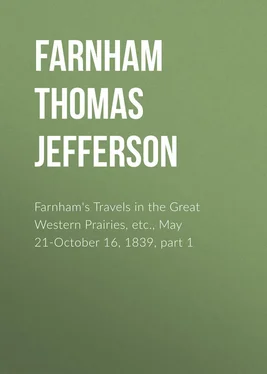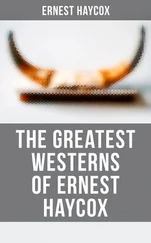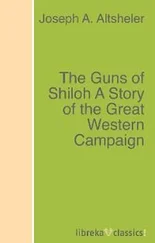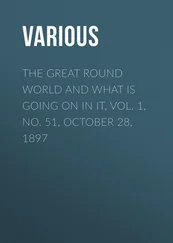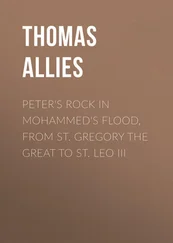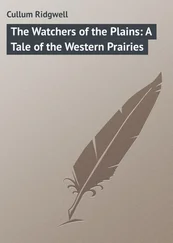The Government purchase the land which the emigrating tribes leave – giving them others within the Territory; transport them to their new abode; erect a portion of their dwellings; plough and fence a portion of their fields; furnish them teachers of agriculture, and implements of husbandry, horses, cattle, &c.; erect schoolhouses, and support teachers in them the year round; make provision for the subsistence of those who, by reason of their recent emigration, are unable to support themselves; and do every other act of benevolence necessary to put within their ability to enjoy, not only all the physical comforts that they left behind them, but also every requisite, facility, and encouragement to become a reasoning, cultivated, and happy people.
Конец ознакомительного фрагмента.
Текст предоставлен ООО «ЛитРес».
Прочитайте эту книгу целиком, купив полную легальную версию на ЛитРес.
Безопасно оплатить книгу можно банковской картой Visa, MasterCard, Maestro, со счета мобильного телефона, с платежного терминала, в салоне МТС или Связной, через PayPal, WebMoney, Яндекс.Деньги, QIWI Кошелек, бонусными картами или другим удобным Вам способом.
Charles Wilkes, Narrative of United States Exploring Expedition (Philadelphia 1844), iv, p. 348.
Niles' Register , lviii, p. 242.
Travels in the Californias and Scenes in the Pacific Ocean (New York, 1844).
In successive editions, his books appear under different titles; but the subject matter is largely the same, one detailing his experiences crossing the continent and in Oregon, the other narrating the California visit. To the latter was added in later editions a history of the American conquest of California. Farnham also published a work on Mexico, in style similar to the others.
Our treaty with Spain, made in 1819, adjusted the boundary as far as the Pacific Ocean, between the latter's possessions in North America and those of the United States; see Gregg's Commerce of the Prairies , in our volume xix, p. 217, note 52. By this convention the United States considered itself the heir of all Spanish claims north of the international boundary line (42°).
Our treaty with Mexico, in 1828, ratified the boundary as defined by the Spanish treaty of 1819.
By our convention with Russia in 1824, the two countries agreed to make no settlements north or south, respectively, of the line 54° 40´. This by no means established the United States claim as far as the line specified. – Ed.
Robert Greenhow, born in Virginia in 1800, was educated at William and Mary College and later studied medicine in New York, afterwards spending some years in Europe. In 1828 he was appointed clerk in the department of state at Washington, where he soon rose to the position of official translator and librarian, an office retained until 1850, when he went to California with the United States Land Commission, dying in San Francisco in 1854. In 1837 he prepared, at the request of the Senate, a History of the Discovery of the North-west Coast , published in Senate Docs. , 26 Cong., 1 sess., 174. This was later expanded into a History of Oregon and California (Boston, 1845). His access to the records of the state department, and his knowledge of Spanish sources, make Greenhow's books authoritative in their field. – Ed.
In his History of Oregon and California , Greenhow adds information to that given in his first volume, regarding these expeditions. His chief source of information was the work of Herrera, although he secured journals of some of the voyagers from W. H. Prescott. All of these expeditions were inspired by Hernando de Cortez. The first (1532) was headed by his kinsman Hurtado de Mendoza, whose lieutenant Juan de Mazuela brought back one vessel after his superior officer had been killed. In 1533, Hernando Grivalja and Diego Becerra were sent to search for the survivors. The former returned without touching mainland; Becerra was killed in a mutiny, and his pilot, Fortuño Ximenes, is supposed to have touched the southern end of the peninsula of Lower California. Farnham omits mention of Cortez's own expedition of 1535-36, when he also is supposed to have reached Lower California. In 1539-40, Francisco de Ulloa proved that this was not an island, and explored its coast to about 30° north latitude. – Ed.
This relates to the voyage (1542-43) of Juan Rodriguez de Cabrillo. The leader of the expedition died upon one of the Santa Barbara Islands (January, 1543), but his pilot Bartolomé Ferrelo sailed farther north. The location of his northern point of exploration is given as 43°, which would be near Cape Blanco; but recent editors consider that there was an early error of calculation, and that Cape Mendocino is the more probable point. Ferrelo in all likelihood advanced as far as the southern boundary of Oregon. See translation of journal of the expedition, with valuable notes by H. W. Henshaw, in United States Geographical Surveys West of the One Hundredth Meridian (Washington, 1879), vii, pp. 293-314. – Ed.
The voyage of Juan de Fuca is generally considered apocryphal. Greenhow, however, thinks it probable, from the correspondence of the straits now called by his name with the great passage he claimed to have entered. The only authority for the alleged voyage of De Fuca, who was a Greek pilot in the service of Spain, is the relation of Michael Lok, an Englishman, who claimed to have met De Fuca at Venice. Lok's story was published by Purchas in his Pilgrims (1625) and on its face was a bid for patronage from the English court. – Ed.
For Cook's discovery of the Hawaiian Islands and his death thereupon, see Franchère's Narrative in our volume vi, p. 209, note 21. During his northward expedition he skirted the entire North-west Coast from Cape Mendocino to North Cape, in the Arctic Ocean, not finding, however, either the entrance to the Columbia or to Puget Sound. – Ed.
The expedition commanded by Admiral Torribio Gomez de Corvan and Sebastian Vizcaino was equipped by the Mexican governor, Count de Monterey (1602). Corvan returned home from the harbor of Monterey, while Vizcaino with his lieutenant Martin Aguilar pushed northward. The identification of the headlands which they named, is now difficult. H. H. Bancroft, History of the North-west Coast (San Francisco, 1886), i, p. 148, concludes that neither Vizcaino nor Aguilar passed 42° latitude. Farnham's identification of the river described by Aguilar as the Umpqua appears to rest upon his own authority. – Ed.
The account of the expedition of Juan Perez, who with his lieutenant Estévan Martinez penetrated to the northern end of Queen Charlotte's Island, and passed some months in a bay probably to be identified with Nootka Sound, was not given to the world by the Spaniards until years later; the English therefore considered themselves, in the person of Captain Cook, the discoverers of this portion of the North-west Coast. – Ed.
Читать дальше
